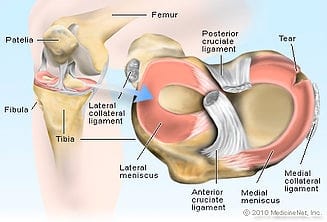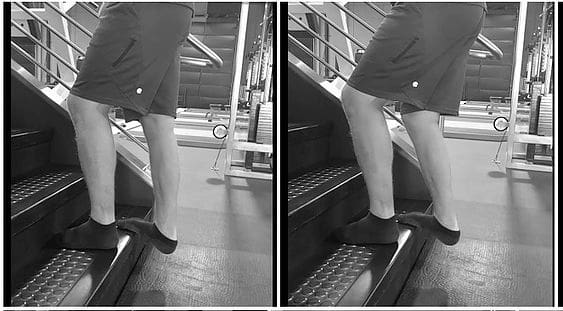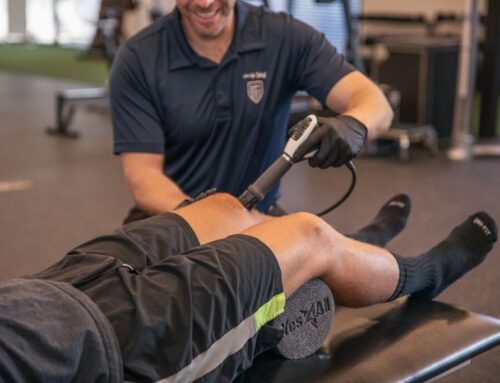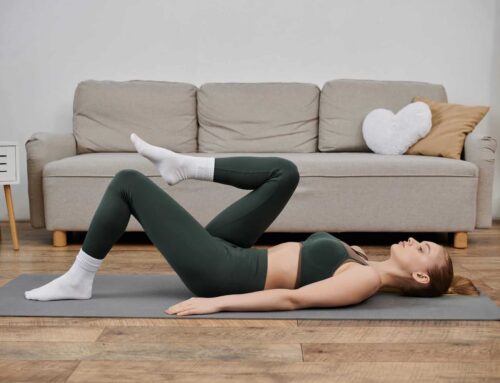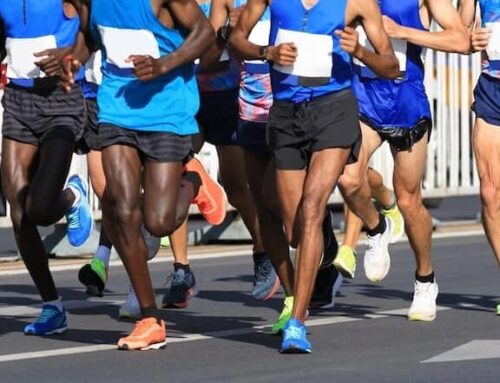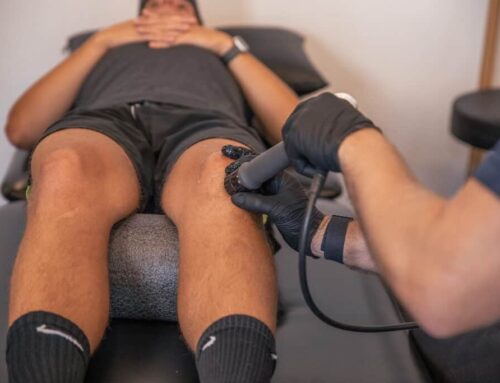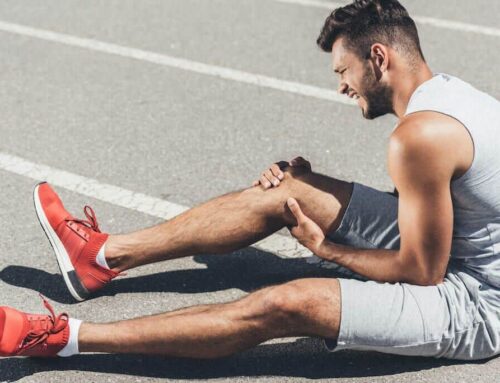Knee pain is a big problem for many athletes and active individuals. You literally can’t get around using your knees whether you’re a hiker, biker, golfer, runner, or weightlifter, you need them! One of the biggest issues with knee pain is the meniscus.
Many people never even hear about their meniscus until there’s a problem with it. So what is it? The meniscus is a structure that lies between your tibia (shin bone) and your femur – see picture below.
The main function of the meniscus is to absorb shock. Problems arise with the meniscus when there is too much shock absorption being passed into the joint and not being absorbed by other structures, such as the muscles. When the meniscus begins to get overloaded, you can imagine that it creates somewhat of a grinding situation in the knee. Over time this can cause degeneration of the meniscus and lead to knee pain. Another way to cause injury to the meniscus is when someone who is running plants their foot then aggressively changes direction, this can often result in a tear.
Depending on the type of tear and the degree of the tear, surgery may or may not be indicated. However it has been found that surgical intervention for many types of meniscal tears is ineffective and physical therapy may be superior. Check out this story of a patient who had knee surgery in 1998, it was still bothering him years later. If you have any sort of history with your meniscus, whether it be irritation, a tear, or surgery, the following tips should help you to decompress the knee joint and allow your meniscus some breathing room.
We are going to focus on the calf muscle. The calf plays a large role in shock absorption, keeping our momentum, and controlling our gait. Without proper calf length, the mechanics at the ankle and knee are both affected which ultimately affects the meniscus. The calf is one of the biggest contributors to decreased performance in athletes.
Foam Rolling
Foam rolling your calf is the first step in unloading and healing meniscus tears. This may not be the most comfortable thing you’ve done while watching Netflix, but hey, it can be done while watching Netflix so there’s really no time excuse. Foam roll your calf every other day for 3-5 minutes. Make sure to roll right down the center, then take it to the left and right side of your calf as well. When you find those really tender spots go ahead and sit there for a few seconds and try to get the muscle to relax. Releasing these restrictions will improve blood flow to the muscle and increase its extensibility which will help for the next exercise.
Calf Stretch
The calf stretch should be done two different ways. One way is with the knee straight, and the other is with a slight bend to the knee, each version stretches a different part of your calf (for those of you who are curious, gastrocnemius vs soleus stretching). The pictures below illustrate this being done on a stair, it can also be done in a lunge position with your hands on the wall.
Heel Walking
Following your stretch, walk around on your heels a little bit to use your newfound dorsiflexion.
Heel Drops
Stand on a step with your heels hanging off of the back and the ball of your feet in firm contact. Go up on your toes and raise your heels. Once at your maximum height begin a slow drop and allow your heels to pass the step, it will look like the picture on the left above in the calf stretch photo. Repeat 6x.
There you have it, you should have beautifully moving ankles in no time! This will translate into improved mechanics up the chain at the knee and ultimately decrease the overall load on your meniscus. If you’ve already had surgery do not despair, PT is just as necessary and effective after you’ve had surgery.
Another big cause of knee pain and irritation to the meniscus is hip weakness. That’s why we recommend a cross training program for all of our runners and knee – dependent athletes.
Blog image: https://www.healthpages.org/anatomy-function/knee-joint-structure-function-problems/


